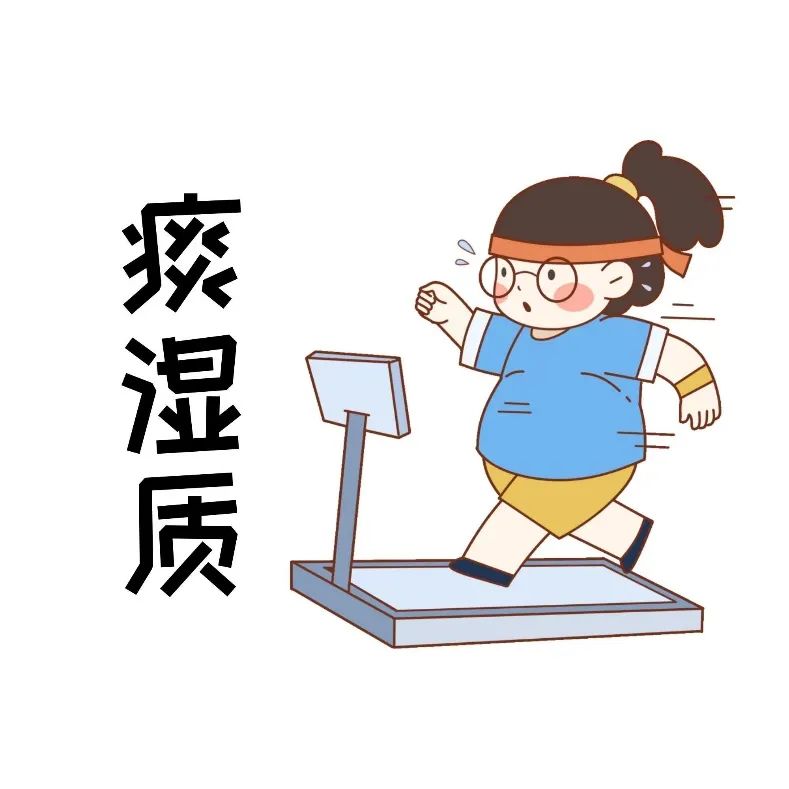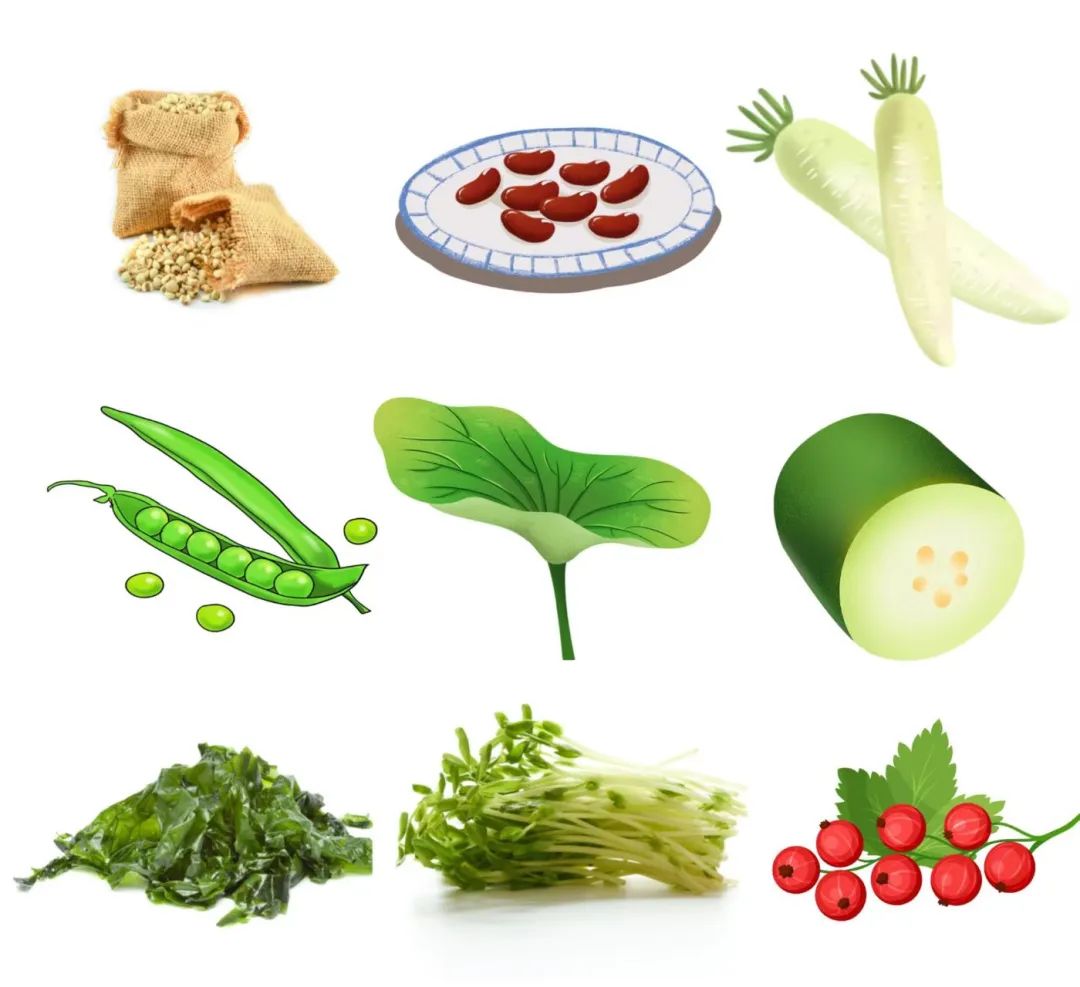
Health Shandong Promotion Account
High altitude, depth, and warmth
Follow us
In today’s society, the number of people who are overweight or obese is increasing. It is common to hear someone jokingly say they “gain weight just by drinking water,” and they often feel heavy, fatigued, and drowsy, which is referred to as “deficient obesity.” This notion is not baseless; it is closely related to the TCM theory of “phlegm-dampness,” which arises from the spleen’s impaired function of transformation and transportation, leading to the improper metabolism of water and dampness in the body. This is also related to a specific constitution in TCM known as the phlegm-damp constitution. The Yuan dynasty physician Zhu Danxi clearly stated that “fat and pale individuals often have phlegm-dampness.” How is phlegm-dampness formed? How can one identify and regulate a phlegm-damp constitution? Today, we will explore the wellness strategies for those with a phlegm-damp constitution.

What is Phlegm-Dampness?
What is phlegm-dampness? Is it the phlegm we cough up? Not quite; the scope of phlegm-dampness is very broad. Generally speaking, the body first accumulates dampness, and if not addressed, this dampness can further congeal into a stickier phlegm. In TCM, phlegm is divided into two types: the narrow definition refers to “visible phlegm,” which is what we typically think of as respiratory phlegm; the broad definition refers to “invisible phlegm,” which is an abnormal accumulation of body fluids due to the dysfunction of the spleen’s ability to transform and transport water and dampness. In simpler terms, it is the accumulation of excess moisture in the body.
The phlegm referred to in the phlegm-damp constitution generally indicates this “invisible phlegm,” which is formed from the accumulation of water and dampness that the body cannot metabolize. Although it is not visible or tangible, it can accumulate in the internal organs, obstruct the meridians, and circulate throughout the body, affecting overall health.
What are the Symptoms of Phlegm-Damp Constitution?
The phlegm-damp constitution is characterized by the stagnation of body fluids leading to the accumulation of phlegm-dampness, primarily marked by stickiness and heaviness. The characteristics of phlegm-damp constitution can be described using the following three keywords:
1. Obesity: It is said that “fat people have more dampness” and “overweight people have more phlegm.” Individuals with a phlegm-damp constitution are often overweight, with a soft and full abdomen. Excess fat is a manifestation of phlegm-damp accumulation, and when water and dampness cannot be metabolized, they tend to accumulate in the abdomen, leading to abdominal obesity.2. Stickiness: TCM believes that “dampness is sticky.” The accumulation of phlegm-dampness can cause various sticky symptoms, such as excessive phlegm, a sticky mouth, oily skin, excessive sweating, and sticky stools. Observing the tongue will also reveal a thick and greasy coating.3. Heaviness: TCM holds that “dampness is heavy and turbid.” Phlegm-dampness can obstruct the clear orifices of the limbs, leading to various feelings of heaviness, such as overall fatigue, heavy legs, reluctance to exercise, and a feeling of heaviness in the head, making one easily drowsy.How is Phlegm-Damp Constitution Formed?
The phlegm-damp constitution can be formed from congenital factors or acquired influences. Congenital factors often have a clear family history, while acquired factors mainly refer to modern unhealthy lifestyle habits, such as overeating, a preference for greasy meats and sweets, a love for cold foods, and a lack of exercise. These are all breeding grounds for phlegm-dampness.
TCM believes that “the spleen is the source of phlegm” and “the spleen prefers dryness and dislikes dampness.” The fundamental reason for the formation of phlegm-damp constitution is a problem with the function of the spleen and stomach. The spleen has the physiological function of transforming and transporting food and fluids. Under normal circumstances, the food and water we consume are digested and absorbed by the spleen, transforming them into vital substances such as qi, blood, and body fluids, which are then distributed throughout the body to provide nourishment. If the spleen qi is weak or if dietary habits are irregular, leading to a decline in the spleen’s transformative function, it is akin to a workshop that cannot operate normally, resulting in the accumulation of unprocessed water and dampness, which acts like waste piling up in the internal organs, obstructing the meridians and generating phlegm. Over time, this leads to the formation of a phlegm-damp constitution.
What Diseases are Easily Induced by Phlegm-Damp Constitution?
“All diseases are caused by phlegm.” Phlegm-dampness flows throughout the body with the circulation of qi and blood, its location being unpredictable. Although it is not visible to the naked eye, it can be very harmful to the body. High cholesterol, triglycerides, and blood sugar levels are closely related to phlegm-damp constitution. If not addressed in a timely manner, it can easily develop into hypertension, hyperlipidemia, diabetes, cardiovascular diseases, and more. Additionally, nodules and tumors are also more likely to occur in individuals with a phlegm-damp constitution.
How to Regulate Phlegm-Damp Constitution?
Individuals with a phlegm-damp constitution should follow the principle of “strengthening the spleen, promoting dampness elimination, transforming phlegm, and reducing turbidity” in their daily lives, paying attention to various aspects of regulation.
1. Dietary Regulation — Light Diet with Less Grease
The “Clinical Guidelines for Medical Cases” states: “Phlegm is primarily transformed from damp and turbid food.” Phlegm-damp constitution is often a result of dietary habits. Regular consumption of “rich and heavy flavors” can lead to a decline in the spleen’s transformative function, causing phlegm-dampness to accumulate in the body. Therefore, it is essential to avoid foods that contribute to phlegm-dampness and protect the spleen and stomach.
Diet should be light, avoiding high-calorie and greasy foods such as fatty meats, sweets, and fried or barbecued items. Cold and raw foods should also be minimized, as they can damage the spleen and stomach’s yang energy, further impairing the spleen’s ability to transform and transport, thus exacerbating phlegm-dampness. It is advisable to consume low-fat, low-sugar, and lightly salted foods, and to include ingredients that strengthen the spleen, promote transportation, and eliminate dampness and phlegm, such as Qian Shi (Fox Nut), Bai Bian Dou (White Hyacinth Bean), Yi Yi Ren (Job’s Tears), Chi Xiao Dou (Adzuki Bean), Bai Luo Bo (White Radish), Dong Gua (Winter Melon), He Ye (Lotus Leaf), Hai Dai (Kelp), and Shan Zha (Hawthorn).

2. Lifestyle — Maintain Dryness to Prevent External Dampness
Individuals with a phlegm-damp constitution have a poor ability to adapt to damp environments. Therefore, while eliminating internal dampness, it is also important to prevent external dampness from worsening the constitution. Living and working environments should be well-ventilated and well-lit, avoiding cold and damp conditions. During rainy seasons, measures should be taken to prevent moisture, keeping the body and clothing dry, and avoiding exposure to cold and rain.
3. Moderate Exercise — Increase Physical Activity
According to TCM theory, the spleen governs the muscles, and movement generates yang. Therefore, exercise can invigorate the spleen and stomach’s yang energy, aiding in the transformation of phlegm and elimination of dampness. Individuals with a phlegm-damp constitution are often overweight, so it is essential to maintain regular physical exercise and outdoor activities, avoiding excessive idleness. Gradually increase the amount of exercise, frequently expose oneself to sunlight, and promote the metabolism of phlegm-dampness and energy consumption. During exercise, it is advisable to choose moderate-intensity, longer-duration, and regular aerobic activities, such as jogging, hiking, and cycling.
4. Mental Well-being — Regulate Mood to Promote Qi Flow
Individuals with a phlegm-damp constitution often experience obstructed qi flow, tend to be mild-mannered, patient, and may frequently feel low in spirits. Therefore, it is important to adjust one’s mindset, facing work and life with a proactive attitude. Regular communication with family and friends, cultivating hobbies, and listening to uplifting music can help to enhance mood and promote the smooth flow of qi.
5. Acupoint Care — TCM External Treatment to Promote Dampness Elimination
Acupoints that have the effect of transforming phlegm and eliminating dampness include Feng Long (Fenglong), Zu San Li (Zusanli), Yin Ling Quan (Yinlingquan), Zhong Wan (Zhongwan), and Pi Shu (Pishu). Among them, Feng Long is a well-known acupoint for eliminating dampness and transforming phlegm, located 8 cun above the tip of the external malleolus on the outer side of the lower leg. Regularly massaging these acupoints or using moxibustion or cupping can strengthen the spleen, eliminate dampness, and improve the phlegm-damp constitution.
Authors: Cai Xiaotong, Lü Hongmei, Chen Rui, He Xiao
Source: TCM Knowledge Dissemination Department
Supervised by: Yu Quande
Planned by: Yu Dong
Edited by: Han Fei
Chief Editor: Wang Hongmin
 Let us work together to promote healthSubmission address:[email protected]Contact number:
Let us work together to promote healthSubmission address:[email protected]Contact number:
0531-82976153, 82860795
Complaint number: 0531-82561231
 Health and Wellness Media Matrix
Health and Wellness Media Matrix
 Qilu Network·Health ShandongLightning News·Health Shandong
Qilu Network·Health ShandongLightning News·Health Shandong
 Kuaishou·Health ShandongDouyin·Health Shandong
Kuaishou·Health ShandongDouyin·Health Shandong

